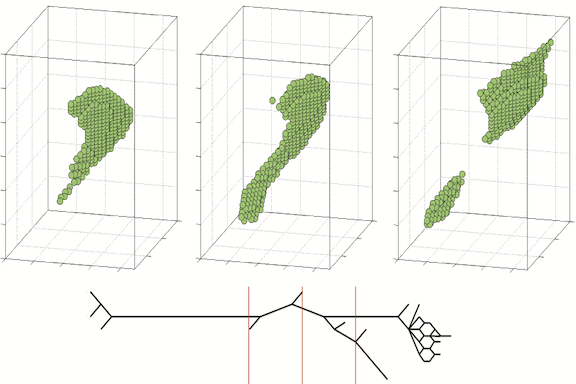My group’s research is in theoretical and computational physics, lying at the interface of several disciplines (plasma physics, astrophysics, turbulence, space physics, nonequilibrium statistical mechanics). Much of my work involves massively parallel numerical simulations (using, e.g., particle-in-cell codes such as Zeltron) performed on national supercomputers (via allocations from DOE INCITE, NSF ACCESS/Frontera, etc.).
Some of my research interests are listed below:
Basic plasma physics (fluid and kinetic)
- Turbulence (my primary focus)
- Magnetic reconnection
- Dynamo
- Instabilities
- Shocks (as an outsider)
- Coherent structures and other emergent phenomena
- Laboratory plasma astrophysics experiments
High-energy astrophysics
- Accretion flows onto black holes (active galactic nuclei and X-ray binaries)
- Relativistic jets (blazars)
- Pulsar winds and nebulae
- Intracluster medium of galaxy clusters
- Cosmic ray acceleration and transport
- Multimessenger astrophysics (in particular, neutrino sources)
- Compact object mergers (as an outsider)
Space physics
- Solar corona
- Solar wind
- Outer heliosphere (as an outsider)
Nonequilibrium statistical mechanics
- Collisionless systems with long-range interactions
- Measures of irreversibility (generalized entropies)
- Complexity
- Chaos theory
Below are some of the problems that I am actively working on (more detailed descriptions to come soon!).
Research topics
Relativistic plasma turbulence
Turbulence in many high-energy astrophysical systems (and some laboratory plasma experiments) exists in the relativistic regime, which is a frontier of theoretical and computational physics.

Instabilities and microphysics in black-hole accretion flows
Matter that accretes onto black holes is susceptible to many plasma instabilities, such as the magnetorotational instability and Rayleigh-Taylor instability. These instabilities drive turbulence and may have dramatic observable consequences.

Nonequilibrium statistical mechanics of collisionless plasmas
In plasmas of high temperature and low density, particles interact collectively through long-range electromagnetic fields rather than binary collisions. A new "nonequilibrium" statistical mechanics must be developed to describe these plasmas.

Radiative plasma astrophysics
Much of our observational knowledge of distant astrophysical systems comes from nonthermal radiation emitted by energized plasma. It is essential to understand how radiation interacts with plasmas and what observational signatures it leads to.

Coherent structures and emergent phenomena
Nonlinear plasma processes (such as turbulence) lead to the spontaneous development of diverse coherent structures (current/vorticity sheets, plasmoids, etc.). Understanding the dynamics and statistics of these structures is a major challenge.

Analytical modeling of plasma microphysics (nonthermal particle acceleration and electron-ion heating)
Recent numerical simulations provide first-principles measurements of nonthermal particle acceleration and the electron-to-ion heating ratio in collisionless plasma turbulence, but these have yet to be explained rigorously by analytical theory.
